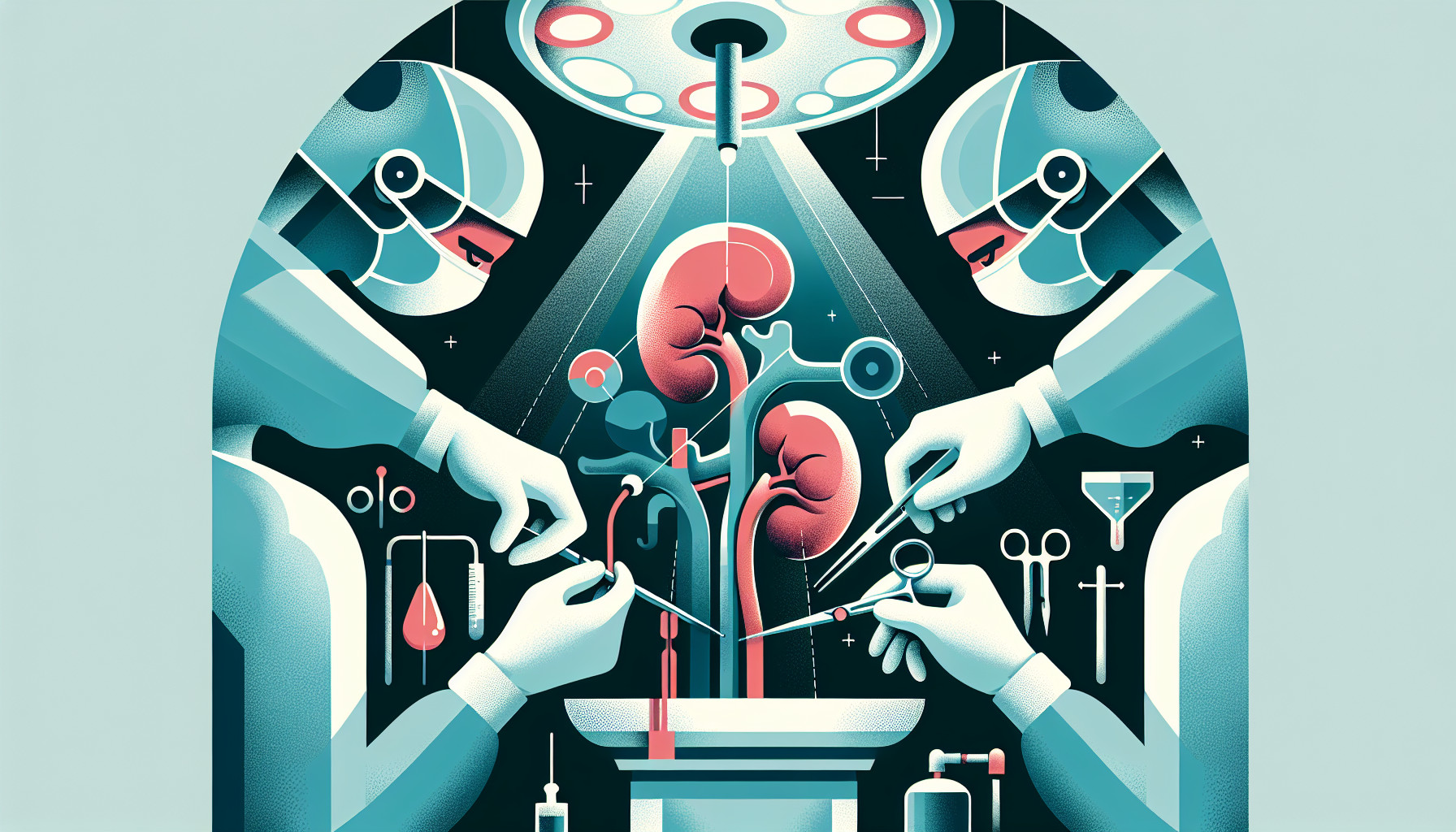Our Summary
This paper looks back at a collection of kidney surgeries performed since 2000 where the patient’s own kidney was removed and then re-implanted (autotransplantation). This kind of operation can be an option when there is a need to preserve the kidney, or when urinary tube reconstruction is not possible.
The researchers reviewed data from 52 patients (out of 59) who had undergone this kind of surgery. Various conditions made this surgery necessary, including urinary tube disease, kidney cancer, a drooping kidney, ongoing side pain, a kidney artery bulge, and kidney-related high blood pressure.
Patients were monitored afterwards using ultrasound, nuclear scans, and CT scans. The study also looked at serious complications that occurred.
Of the 52 patients (30 of whom were women), the average age was 48 (ranging from 12 to 76 years old). After an average of just over 6 years, over 90% of the patients had successful long-term functioning of their re-implanted kidney. Five patients (around 10%) experienced failure of the re-implanted kidney within an average of 15 months. Early and late complications occurred in four and eight patients respectively. In the group of patients with kidney cancer, four had the disease progress but all are still alive.
In conclusion, this kind of kidney surgery has a high success rate (over 90% in this study) for complex conditions that require the preservation of the kidney. However, for those with kidney cancer, the disease can still progress after the surgery. Therefore, careful patient choice and monitoring is necessary. The study supports that this surgery is safe, effective, and long-lasting when performed by experienced surgeons.
FAQs
- What conditions can make laparoscopic nephrectomy necessary?
- What is the success rate of laparoscopic nephrectomy according to this study?
- How were patients monitored after undergoing laparoscopic nephrectomy?
Doctor’s Tip
A doctor might tell a patient considering laparoscopic nephrectomy that the procedure can be a successful option for preserving the kidney in cases of complex conditions. It is important to choose an experienced surgeon and to undergo regular monitoring after the surgery to ensure long-term success. In cases of kidney cancer, there is still a risk of disease progression, so careful consideration and follow-up are essential.
Suitable For
Typically, patients who are recommended for laparoscopic nephrectomy are those with complex kidney conditions that require the preservation of the kidney. This includes patients with urinary tube disease, kidney cancer, a drooping kidney, ongoing side pain, a kidney artery bulge, and kidney-related high blood pressure. These patients may not be suitable for other types of surgery or may require preservation of the kidney for long-term functioning.
It is important for patients to be carefully selected for this type of surgery, as the study found that while the success rate was high (over 90% in this study), there were still some cases of failure and complications. Patients with kidney cancer should be monitored closely, as the disease can still progress after the surgery.
Overall, laparoscopic nephrectomy is considered safe, effective, and long-lasting when performed by experienced surgeons. It can be a good option for patients with complex kidney conditions who require preservation of the kidney.
Timeline
Before laparoscopic nephrectomy:
- Patient is diagnosed with a condition that requires removal of the kidney but preservation of kidney function.
- Surgery is discussed as an option with the patient, including the risks and benefits.
- Pre-operative tests and evaluations are done to ensure the patient is a suitable candidate for surgery.
- Patient undergoes laparoscopic nephrectomy procedure.
After laparoscopic nephrectomy:
- Patient is monitored post-operatively for any complications or side effects.
- Follow-up tests such as ultrasound, nuclear scans, and CT scans are done to assess the functioning of the re-implanted kidney.
- Long-term monitoring is done to track the success of the surgery and functioning of the re-implanted kidney.
- Patients may experience complications, which are managed accordingly.
- Patients with kidney cancer may have the disease progress post-surgery, requiring further treatment.
- Overall, the surgery has a high success rate for preserving kidney function in complex conditions, but careful patient selection and monitoring are crucial for optimal outcomes.
What to Ask Your Doctor
Some questions a patient should ask their doctor about laparoscopic nephrectomy include:
- What are the specific reasons why I need a laparoscopic nephrectomy?
- What are the potential risks and complications associated with this surgery?
- What is the success rate of this surgery for my particular condition?
- How experienced are you in performing laparoscopic nephrectomies?
- What kind of monitoring and follow-up care will be required after the surgery?
- Will I need any additional treatments or medications after the surgery?
- How long is the recovery period and what can I expect during this time?
- What lifestyle changes, if any, will I need to make after the surgery?
- Are there any alternative treatment options available for my condition?
- How will this surgery affect my long-term kidney function and overall health?
Reference
Authors: Tran G, Ramaswamy K, Chi T, Meng M, Freise C, Stoller ML. Journal: J Urol. 2015 Sep;194(3):738-743. doi: 10.1016/j.juro.2015.03.089. Epub 2015 Mar 20. PMID: 25801764
